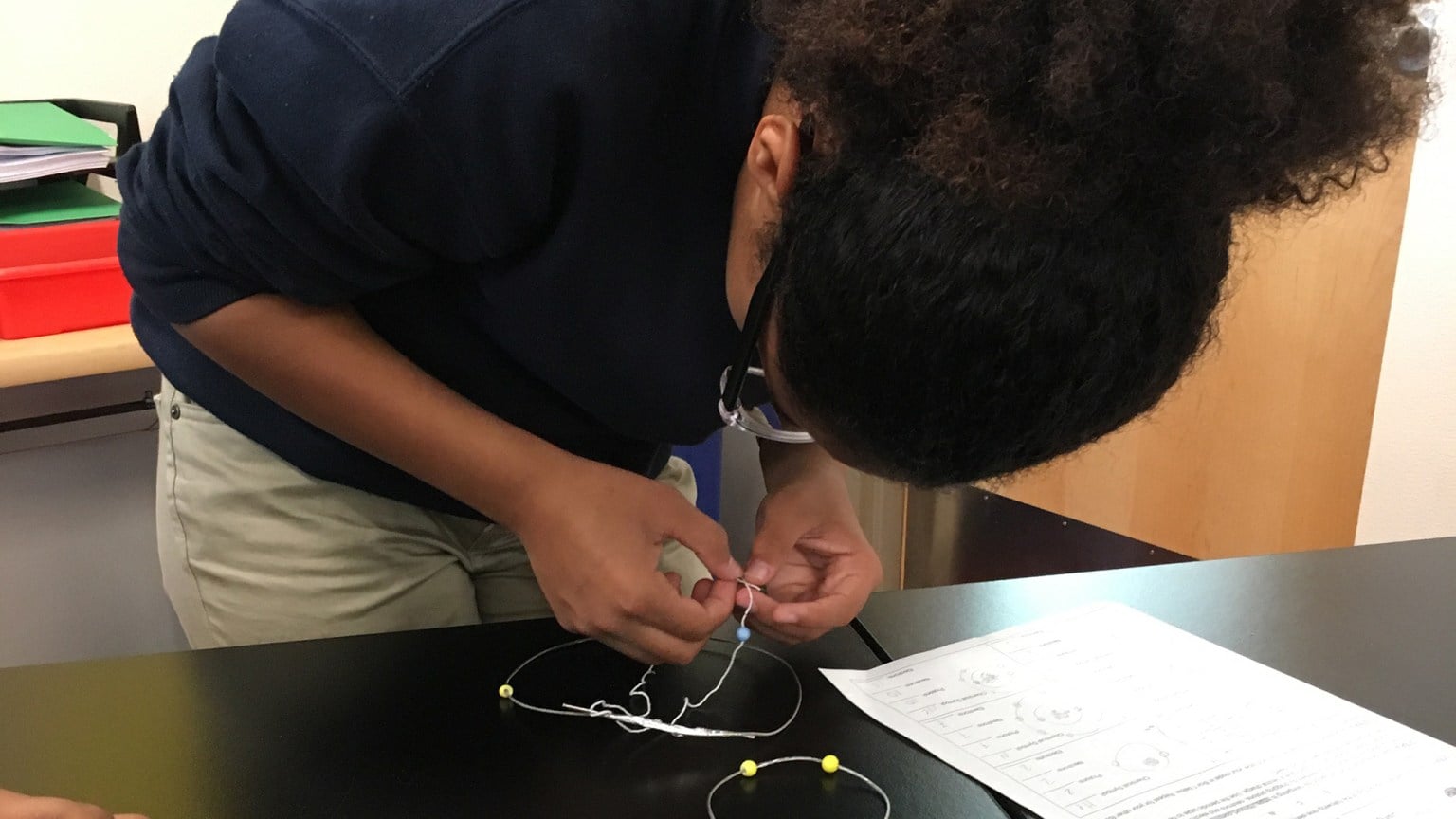Hanging Atom Models
Grade 8, 90min
In the Hanging Atom Models project, students team up to create a series of elements using an online simulation tool. They record their results on paper and consider how their atoms differ from one another. Finally, teams choose one of their elements to create as a large wire model and then analyze the benefits and limitations of such a model.

Topics addressed
- Atom models, components and ideas: neutrons, protons, electrons, ions, atomic number, atomic mass
- Primary CT concept: abstraction. Students create three types of models for a specific element, then evaluate how models are beneficial in our understanding of atoms, as well as how their models are limited.
Students will be able to
- Determine the number of protons, electrons and neutrons for specific elements
- Create visual models of atoms for specific elements
Materials
-
Slides:


-
Student handout:



- String
- Hobby wire - a reasonably sturdy picture hanging wire works great
- Glue
- Foil tape
Prep
- Create a hanging model for hydrogen that serves as an exemplar project, so students can better understand what their models should look like
- Consider creating the nuclei before class – thread a length of string onto a small needle and through a small foam bead, onto which all other protons and neutrons will be glued by students
Suggested lesson breakdown
You can keep the class together for some or all of these steps, or allow teams to self-pace
- 10min – introduce project, go over requirements and and expectations and demo simulation tool
- 40min – students use the web-based simulation to create their selected five elements and answer the questions on the second page of their packet
- 30min – students create their physical hanging atom models
- 10min – students clean up and answer the reflection questions at the end of their packet
Next Generation science standards
-
NGSS.MS-PS1-1
Develop models to describe the atomic composition of simple molecules and extended structures.
Common Core standards
-
CCSS.ELA-Literacy.RST.6-8.7
Integrate quantitative or technical information expressed in words in a text with a version of that information expressed visually (e.g., in a flowchart, diagram, model, graph, or table).